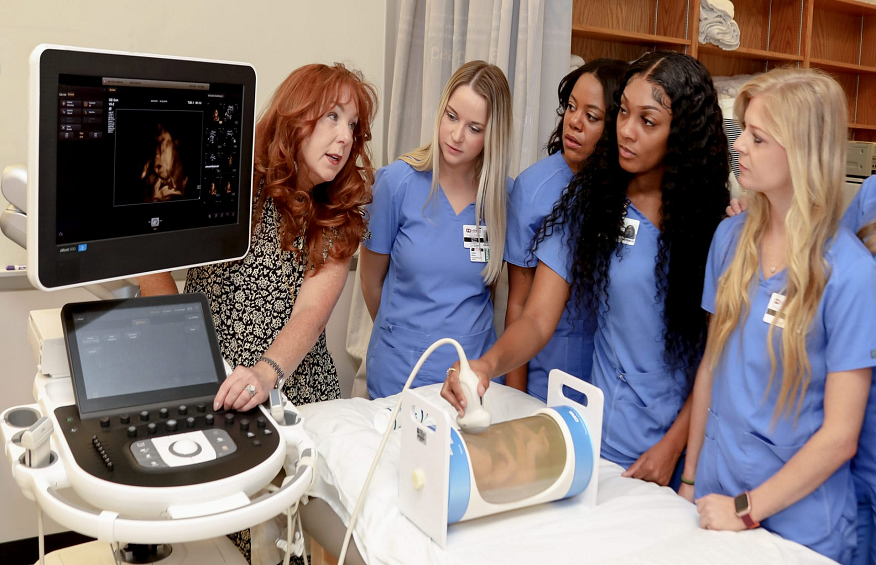
The Radiant Rewards: Unlocking the Benefits of Medical Diagnostic Imaging
288 Views
Read Time:5 Minute, 10 Second
For the area of medicine, the advent of medical diagnostic imaging has been nothing short of revolutionary. The capacity to peek into the body without intrusive treatments provides physicians with crucial information regarding their patients’ health. This technology has paved the way for accurate diagnoses, targeted treatments, and increased chances of recovery.
Below, we delve into 20 benefits of medical diagnostic imaging.
- Non-Invasive Diagnosis: Before the advent of medical imaging, many ailments could only be diagnosed through invasive methods like surgery. Today, imaging allows for a non-invasive peek inside the body. Techniques like MRI, CT, and X-ray produce images that showcase abnormalities without breaking the skin. This not only spares patients discomfort and potential complications from invasive procedures but also streamlines the diagnostic process, allowing for quicker interventions.
- Improved Treatment Planning: Medical diagnostic imaging provides clear, high-resolution images that help doctors devise the most effective treatment plan. By visualizing the severity and location of the ailment, physicians can make informed decisions regarding surgeries, medication doses, or alternate therapies. This targeted approach results in optimized patient outcomes and reduces the likelihood of overtreatment.
- Early Detection of Diseases: Cancers, cardiovascular diseases, and other life-threatening conditions can be silent killers, with symptoms often appearing at advanced stages. Medical imaging can detect these conditions at their nascent stages, leading to early intervention, which significantly enhances the likelihood of recovery. The mammogram, for instance, has been instrumental in the early detection of breast cancer, saving countless lives.
- Reduced Need for Exploratory Surgery: Before imaging, exploratory surgeries were common to identify and diagnose internal issues. These procedures came with the risk of infections, complications, and extended recovery periods. Today, medical imaging largely negates the need for such surgeries, offering a safer and more efficient diagnostic route.
- Enhanced Patient Care and Comfort: Patient comfort and care have taken a leap forward with medical imaging. Procedures that were previously painful or uncomfortable have been replaced by quick scans that are often painless. For example, an endoscopy can be an uncomfortable experience, but a CT scan can sometimes offer similar insights without the discomfort.
- Cost-Efficient Healthcare: Early diagnosis means early intervention, which can result in reduced treatment durations and hospital stays. By negating the need for certain surgeries and ensuring optimized treatment plans, medical imaging has the potential to curtail healthcare costs for both providers and patients.
- Monitoring Disease Progression and Treatment Efficacy: Regular imaging scans allow doctors to monitor the progression of a disease, assessing if it’s stabilizing, advancing, or regressing. This is invaluable in chronic conditions where treatment efficacy is paramount. It ensures that the prescribed treatments are working and allows for timely alterations if they aren’t.
- Advancements in Radiology AI: The marriage of artificial intelligence with radiology promises automated image interpretations, which can aid in faster diagnoses. Machine learning algorithms can spot abnormalities that might escape the human eye, offering an additional layer of scrutiny.
- Minimizing Human Error: While human expertise remains paramount in medical diagnoses, imaging acts as an objective tool that can affirm or counter a physician’s diagnosis. This dual-check system significantly minimizes diagnostic errors, ensuring patients receive the right treatment.
- Facilitating Research and Medical Advances: Medical imaging has been instrumental in advancing medical research. By studying images of diseases and their progression, researchers gain insights that drive innovations in treatment methods and disease understanding.
- Patient Empowerment: When patients can see visual representations of their ailments, it often reinforces the need for lifestyle changes or treatments. Medical imaging, thus, acts as a tool for patient education and empowerment, motivating them to take charge of their health.
- Improving Surgical Outcomes: In surgeries, precision is key. Diagnostic imaging provides surgeons with detailed maps of the area they’ll operate on, ensuring precision, which translates to reduced surgery times and improved outcomes.
- Enhanced Pediatric Care: Children, being less able to communicate symptoms, benefit immensely from medical imaging. It offers a non-invasive means to understand their ailments, ensuring they get the right care without unnecessary discomfort.
- Greater Accessibility to Care: With advancements in portable imaging devices, even remote areas with limited medical facilities can access diagnostic imaging. This democratizes healthcare, ensuring more people receive accurate diagnoses.
- Augmenting Telemedicine: Remote consultations have surged, especially post the COVID-19 pandemic. Medical imaging complements telemedicine, allowing physicians to diagnose patients without physical examinations.
- Streamlining Medical Collaboration: For complex cases that require multiple specialists, medical images offer a common visual language, ensuring all doctors involved have a clear understanding of the patient’s condition.
- Reduction in Repeat Examinations: Modern medical imaging technologies provide high-quality, detailed images that reduce the need for repeat examinations. Previously, blurry or inconclusive images might necessitate multiple sessions. However, advancements in imaging reduce this, saving both time and resources, and reducing patient exposure to radiation.
- Improved Patient Records: Digital medical imaging has enabled the easy storage and retrieval of patient records. This seamless storage ensures that physicians can easily access past images to compare and monitor changes over time, leading to a comprehensive understanding of a patient’s medical history.
- Environmental Benefits: The shift from film-based to digital imaging has substantial environmental benefits. The former required chemicals for developing and large storage spaces. Digital imaging eliminates chemical waste and reduces physical storage needs, making it a greener alternative.
- Boosting Radiopharmaceutical Research: Nuclear medicine uses radiopharmaceuticals to diagnose and treat diseases. Medical imaging, particularly PET scans, is critical in researching the effects and distribution of these radiopharmaceuticals, leading to advances in this sector.
- Customizable Contrast Options: Modern imaging systems allow radiologists to adjust contrast levels in real-time, enabling them to focus on areas of interest. This adaptability ensures clearer visualization of specific tissues or blood vessels, aiding in a more accurate diagnosis.
- Augmented Reality (AR) Integration: Emerging integration of AR with medical imaging is transforming surgeries. Surgeons can overlay digital images onto the real-world operating field, providing real-time guidance and improving the accuracy of procedures.
In conclusion, top medical diagnostic imaging stands as one of the most influential innovations in modern healthcare. Its benefits touch every aspect of patient care, from diagnosis to treatment and beyond. As technology evolves, the potential of medical imaging will only expand, promising even brighter horizons for global healthcare.



Average Rating